Owned by Gary from Bolton, ON.
Back in 1961 if one wanted to introduce a new car at a motor show you simply hopped in and drove it there!…. how else ?
That’s exactly what Jaguar test driver Norman Dewis did back on a cold evening in March of that year. The company was late in getting this new model ready so Dewis simply drove the factory prototype all the way from England to Geneva for what is now remembered as one of the most important debuts of a new car ever . There are even fanciful reports of the engine ticking still as it cooled down on the show stand while the public and press surrounded this new mystery car . You see the brand new E type had been previewed weeks before for a privileged few VIPs and racecar drivers and the buzz by the time the Geneva happened was deafening . Loud enough even to get attention of one Commedatore’ Enzo Ferrari who upon seeing it for the first time, proclaimed it was the most beautiful motor car he had ever seen but with only one problem …. It did not carry a prancing horse badge on its nose . This might have even translated to worry for Ferrari as this car came out of the box as a dual purpose ready to race street car evidenced by the fact that in the first three years of production this car even came with two owner’s manuals if requested , one street , one competition .
New tech was in abundance. This included disc brakes all round those being inboards in the rear , a fully independent rear suspension with not two but four coil over dampers in back . The ridged semi monocoque chassis much revised and evolved from the Lemans winning D Type . A revised high compression 3.8 ltr double overhead cam inline 6. The “R” on the engine number denoted the high compression option engine. It was rated at 265 bhp with as much torque mated to a 4 speed Moss box . Weighing in at just over 2500 lbs these were very impressive numbers indeed for 1961 and all this with a price approximately one third that of a Ferrari. The body work was penned not by a car designer but by aeronautical aerodynamicist Malcom Sayer . This is clearly evidenced by its oh so slippery shape . Some attribute its reported top speed of 150MPH in part to this very bodywork . Keep in mind this was back when aerodynamics for cars was still considered a black art . So fascinated by the newly formed NASA space program was Sayer that the shape of the rear hatch and its side mounted hinge set up is said to be taken directly from a that on a Mercury space capsule. Sayer was no novice to Jaguar however as he was also responsible for penning Lemans winning C and D types , the ill-fated XJ13 and much later, the XJS.
Surprisingly most of the early E Types were left hand drive as many were destined from new to end up in North America . Large numbers of US soldiers stationed in Europe immediately following the war were so smitten by those strange looking, light nimble British sports cars and Jaguar it seemed was banking on those very soldiers wanting such cars on their return back home. Jaguars thinking worked and the E type sold well enough not only to save Jaguar from its financial troubles but to once again reestablish its reputation on the track …. that was at least until some Americans started showing up with V8s stuffed into little British ACs . That however is a whole other glorious story ….
So by 1963 Jaguar, in an effort to remain competitive , had planned to make 18 lightweight competition E types but in the end only produced 12. Over five decades after its introduction such is the enduring presence and popularity of this car that just last year in fact ,as a way of introducing the new F type and paying homage to its mother , Jaguar produced 6 more lightweights (using the final six serial numbers ). These were not farmed out replicas but rather perfectly hand built “in house” E types sold for track use only .
Jaguar ended up selling the E types for over 13 years and thru many iterations. The series one however remains now the most pure and the most sought after for its light weight , highest revving engine, overall top speed and some argue , fastest 0 to 60 time of all iterations . Collectors admit that if the E type was built in the same extreme low numbers as comparable Ferraris of the day their values today would be very similar now due in part to their glorious race history and technical prowess that tell the story of many of these early cats .
The car featured here is a 1963 3.8ltr Series one FHC or Fixed Head Coupe and to this writers eye the most pure form of an E. This was the last year for the series ones in its original guise . By 1963 some small changes did take place however like the deeper foot wells , seats that now slide back to a curved bulkhead behind . All in an effort to better accommodate the larger framed North American driver . Features of the early series ones include stainless dash and console, three glove boxes or “cubbies” in the Fixed head cars as well as the Moss gearbox famously and unjustifiably maligned for being without a Syncro in first gear . In an effort to save production costs this very robust transmission was already in use in cars and trucks of the day in Britain and was carried into production on the series ones. Most owners today however change out the gearbox to either for a fully synchronized 4.2 box or , perish the thought …. a five speed box . To my surprise and delight and when set up properly, there really is no need to ..
Ladies If you want modern and easy then buy a Volvo !!!
After two years of research and work , this particular car is once again thriving in its originality . From its Dunlop single piston brake calipers , right down to the original , very skinny and even more slippery Dunlop cross ply tires . Ladies if your squeamish there’s still time to get a deal on that Volvo!
Also present now are the original type Champion sparkplug holders and wiring loom . The air filter box, the labels , even the period battery are now all as they would have been in ’63. Engine cam covers and SU carburetor pots are once again resplendent in polished stainless steel . All this to my eye makes for a living breathing history lesson and a high water mark in Britain’s glorious automotive past .
For the other purists reading this the only nonstandard item and in an honest tribute to period rallying , of which E Types were so used , the owner has added a pair of Smiths Rally clocks which are removable of course for concours events .
This Particular E type is now painted the correct Opalesant Silver Blue car has clocked over 2000kms in the last two years .
With that comes the accumulation of engine grime and spots on the garage floor are now also…. historically accurate .
Hail Britannia and long live the E type.

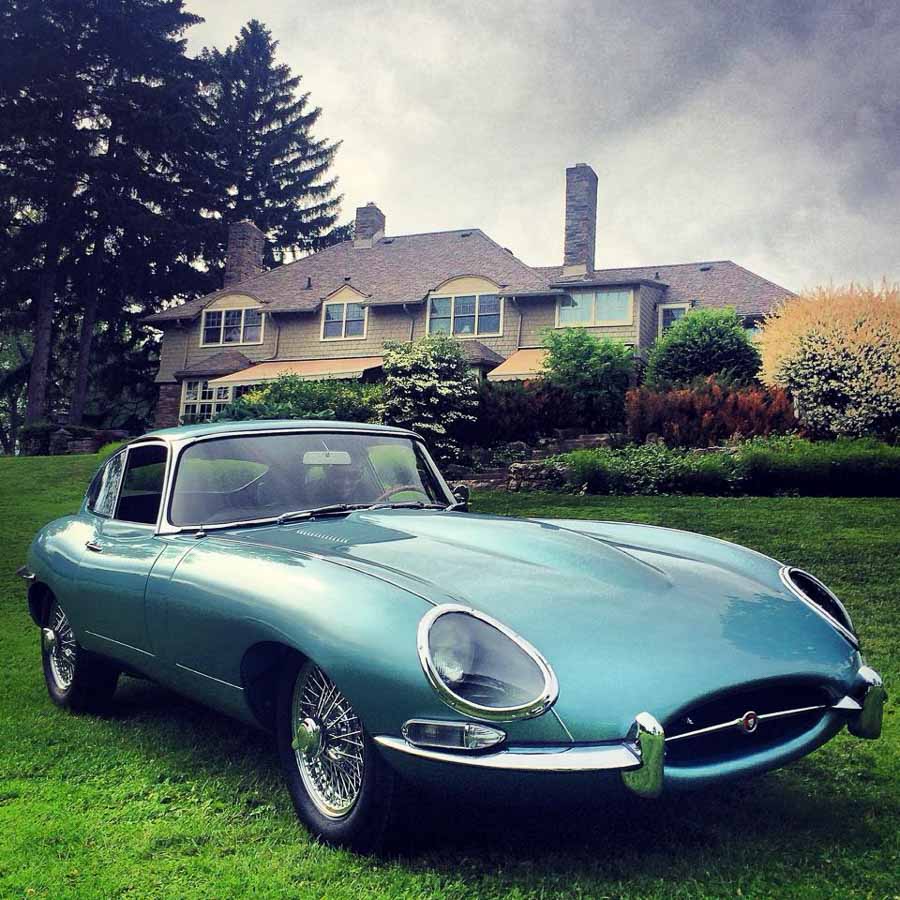
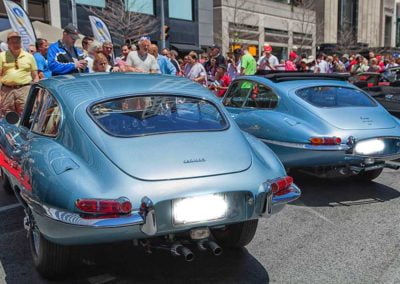
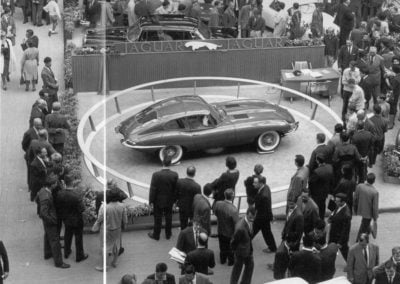
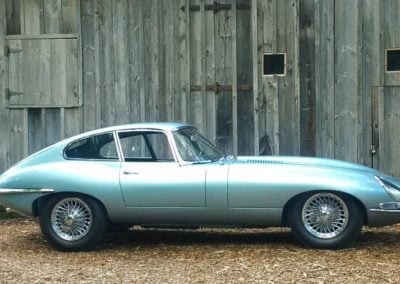
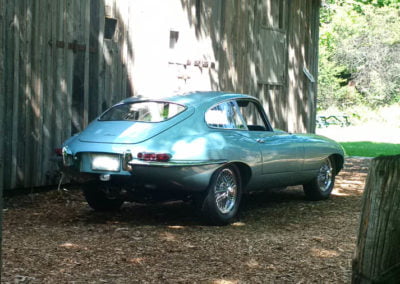
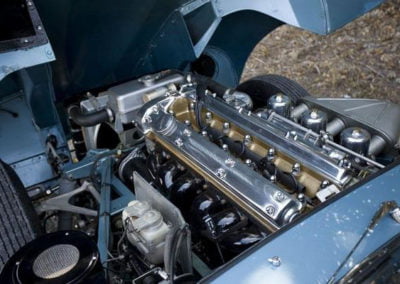
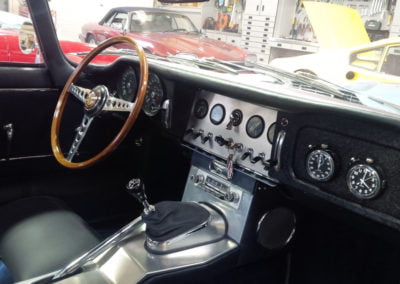
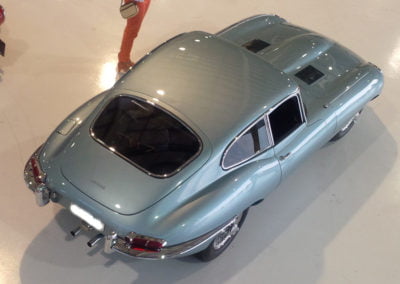
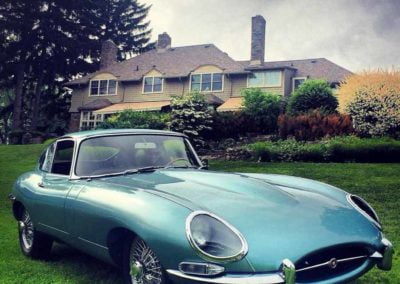
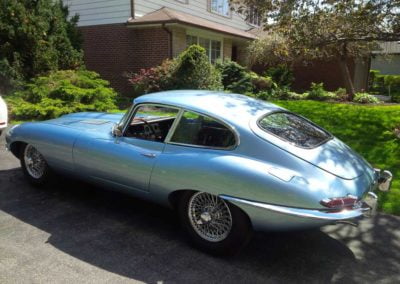
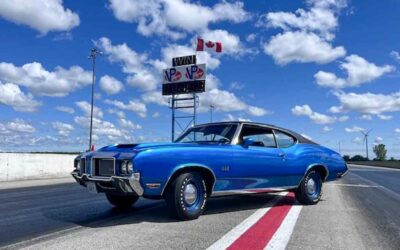
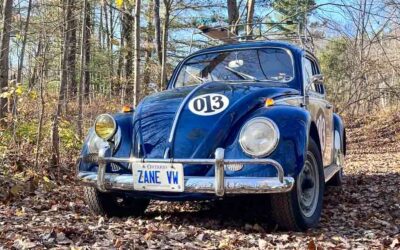
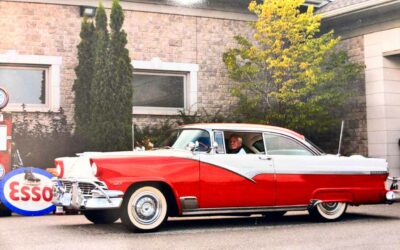
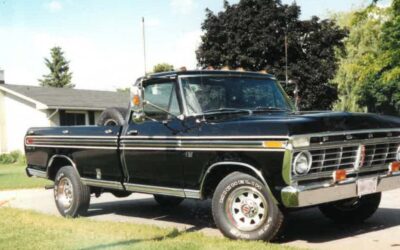
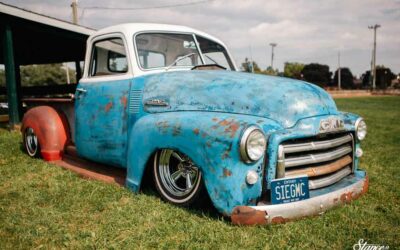
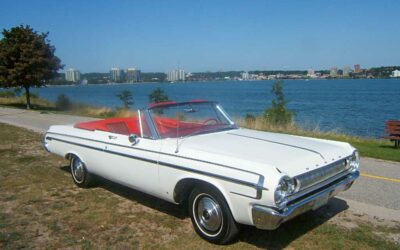
Stunning car! Love the design of the coupe.